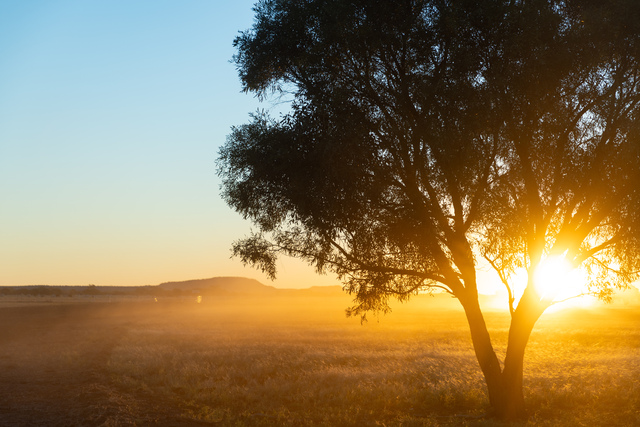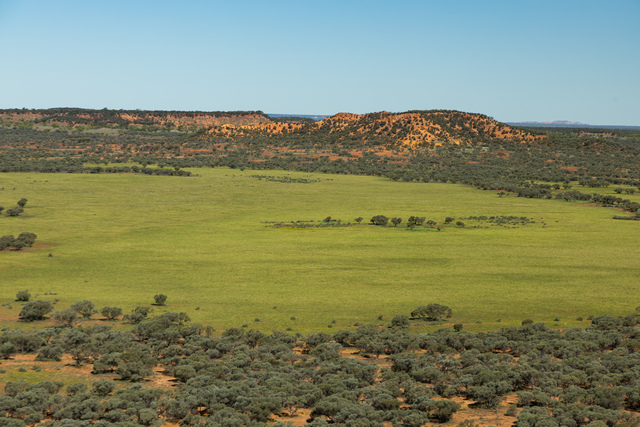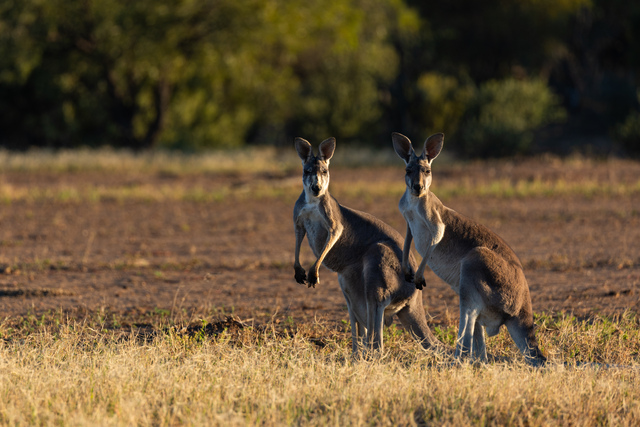
The Miles Government has secured one of the largest and most environmentally significant land acquisitions in recent history with the purchase of Vergemont Station, a 352,589-hectare cattle grazing property in western Queensland.
The landmark deal was made possible through a partnership with The Nature Conservancy, which brokered a $21 million philanthropic donation to contribute to the purchase, in what is likely to be the single largest donation for land protection in Australia.
Vergemont Station sits at the headwaters of the Lake Eyre Basin, one of Queensland’s most important inland river catchments and one of the last remaining free-flowing arid river systems in the world.
It contains significant riverine and biodiversity conservation values, including key habitat for the endangered night parrot, vulnerable yellow-footed rock-wallaby and highly restricted Opalton grasswren.
About 98 per cent of Vergemont Station is covered in remnant vegetation and the land lies across two of Queensland’s 13 bioregions.
Vergemont Station contains 34 different regional ecosystems, ranking higher than 90pc of existing national parks in Queensland in terms of regional ecosystem representation.
Eight of these regional ecosystems are not represented as comprehensively on any other property in Queensland.
This includes an area of “of concern“ mulga woodlands on quaternary deposits regional ecosystem that is about the size of Lamington National Park and will significantly increase the protection of this type of regional ecosystem from 1.43pc to 10.35pc of its extent.
Vergemont Station adjoins the recently acquired Tonkoro Station.
When these two properties are combined with the surrounding Mount Windsor Nature Refuge, Pullen Pullen Special Wildlife Reserve and Goneaway and Diamantina National Parks, it will create a protected area corridor that conserves almost one and a half million hectares of Channel Country bioregion.
Much of this broader protected area landscape sits within the Maiawali First Nations People’s ancestral lands and is understood to contain significant Indigenous cultural heritage values.
The government will engage with the First Nations people to undertake cultural heritage assessments and future planning.
It is intended that at least 300,000 hectares of the property will become national park following a transition period that will enable the former landowner to transition their business off the property.
The remainder will continue to support opal mining operations, ensuring the long-term future of Western Queensland’s iconic opal industry.
“Dedication of Vergemont Station and the recently acquired Tonkoro and Melrose Stations as national park will also generate a range of economic activity in the local region,“ said Minister for the Environment and the Great Barrier Reef Leanne Linard.
“This includes enhanced tourism opportunities, the employment of locally-based rangers and construction of new infrastructure and land management activities such as pest and fire management actions, which will be sourced from local contractors where suitable.
“We will work to ensure an ecologically sustainable co-existence between the existing opal mining operations and conservation of the important natural and cultural values on the property.
“We will allow small-scale opal mining interests to continue their operations on suitable areas within the property.“
Dr James Fitzsimons, the Nature Conservancy senior advisor, global protection strategies said:
“(The) purchase of Vergemont Station by the Queensland Government creates a conservation corridor of about 1.4 million hectares, including key habitat for the night parrot and Opalton grasswren and protects the headwaters of the Lake Eyre Basin, the source of one of the last remaining free-flowing arid river systems in the world.
“The $21 million donation to The Nature Conservancy to enable this purchase is most likely the single largest donation to buy land for conservation in Australian history.
“It highlights the power of leveraged gifts, enabling philanthropists and governments alike to achieve outcomes far beyond what is possible alone.
“This model will be essential if Australia is to achieve its target of protecting 30pc of lands and 30pc of oceans by 2030.”
Key Facts
* In a landmark deal, the Miles Government, in partnership with The Nature Conservancy, has acquired a cattle property in western Queensland for future dedication as national park.
* Vergemont Station contains significant riverine and biodiversity conservation values, including key habitat for the endangered night parrot, vulnerable yellow-footed rock-wallaby and highly restricted Opalton grasswren.
* The acquisition creates a protected area corridor that conserves nearly 1.5 million hectares of the Channel Country bioregion.
* The government will allow boulder opal mining operations to continue on parts of the property.







